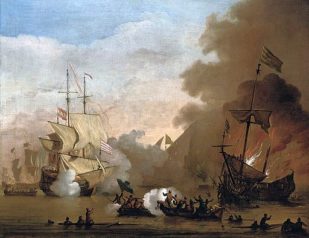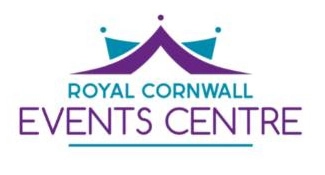A new year begins and businesses in Cornwall are getting ready for what we hope will be another busy summer season. With this in mind we’re working hard to ensure this year’s show is bigger and better than ever. We’ve also been asking ourselves, given last year’s huge influx of visitors, “when did Cornwall first become such a popular destination?” The answer may surprise you!
A land apart
Surrounded by treacherous seas, ringed by cliffs and at the end of a long peninsula, Cornwall has always been rather cut off. The Romans largely left the locals to their own devices and the region survived as an independent kingdom until around the time of the Norman conquest.
 Although nominally an English county, mediaeval Cornwall was entirely different from the rest of the country. They still spoke in the Cornish tongue, still prided themselves on being descended from British ancestors (rather than Saxon) and as late as the mid-16th century they still possessed their own styles of dress, folklore, naming-customs, agricultural practices as well as games and pastimes.
Although nominally an English county, mediaeval Cornwall was entirely different from the rest of the country. They still spoke in the Cornish tongue, still prided themselves on being descended from British ancestors (rather than Saxon) and as late as the mid-16th century they still possessed their own styles of dress, folklore, naming-customs, agricultural practices as well as games and pastimes.
It was only during the tumultuous 17th century that Cornwall was brought more into line with the rest of the country – by 1700 there were just 5000 Cornish speakers left, most of them in the coastal parishes between the Lizard and Land’s End.
Discovered at last
Although Cornwall had largely been assimilated into the rest of the kingdom it was still hard to reach. In 1673, it took eight days to travel by coach from London to Exeter, let alone to the Tamar and beyond.
The railway eventually reached Truro in 1859, Falmouth in 1864 and West Cornwall in 1877 – for the first time ever the county became relatively accessible. To begin with, however, most visitors to the west country ventured no further than the likes of Weston-super-Mare, Torquay or Minehead.
 In late Victorian times St Ives began to attract a string of artists and by the 1950s there was a thriving community whose paintings opened the eyes of the public to the glorious beaches and picturesque seascapes. Writers such as Daphne du Maurier, Rosamund Pilcher and Winston Graham (author of the Poldark novels) also captured the popular imagination with local tales of romance, mystery and rugged beauty. By the second half of the 20th century cars and roads were much improved, mass tourism took off and Cornwall was “discovered”.
In late Victorian times St Ives began to attract a string of artists and by the 1950s there was a thriving community whose paintings opened the eyes of the public to the glorious beaches and picturesque seascapes. Writers such as Daphne du Maurier, Rosamund Pilcher and Winston Graham (author of the Poldark novels) also captured the popular imagination with local tales of romance, mystery and rugged beauty. By the second half of the 20th century cars and roads were much improved, mass tourism took off and Cornwall was “discovered”.
Pirates – and not from Penzance
There’s a twist in this story – one that has been largely overlooked. For about 300 years Cornwall was a very popular destination for visitors of a quite different kind. Whereas today’s tourists arrive in 4x4s, armed with nothing more threatening than surfboards, buckets and spades, these hordes came by sea, wielding scimitars, daggers and muskets.
We’re talking about Barbary pirates from Algiers, Tunis and Tripoli who came to Cornwall’s shores in search of slaves. They terrorised coastal communities for centuries but were especially troublesome in the 17th century.
 In August 1625 corsairs raided Mount’s Bay, capturing 60 men, women and children and taking them into slavery. In 1626 St Keverne was repeatedly attacked, and boats out of Looe, Penzance, Mousehole and other Cornish ports were boarded, their crews taken captive and the empty ships left to drift. It was feared that there were around 60 Barbary men-of-war prowling the Devon and Cornish coasts; attacks were occurring almost daily and Admiral Sir John Eliot declared that the seas around England “seem’d theirs.”
In August 1625 corsairs raided Mount’s Bay, capturing 60 men, women and children and taking them into slavery. In 1626 St Keverne was repeatedly attacked, and boats out of Looe, Penzance, Mousehole and other Cornish ports were boarded, their crews taken captive and the empty ships left to drift. It was feared that there were around 60 Barbary men-of-war prowling the Devon and Cornish coasts; attacks were occurring almost daily and Admiral Sir John Eliot declared that the seas around England “seem’d theirs.”
Pay or stay
The situation was so bad that in December 1640, with a reported 3,000-5,000 English people held in Algiers, Parliament began to oversee the ransoming of captives. Charities were also set up to help ransom the captives and local fishing communities clubbed together to raise money to liberate their own.
 In 1645, another raid by Barbary pirates on the Cornish coast saw 240 men, women and children kidnapped. The following year Parliament sent Edmund Cason to Algiers to negotiate the ransom and release of English captives. He paid on average £30 per man (women were more expensive to ransom) and managed to free some 250 people before he ran out of money. Cason spent the last 8 years of his life trying to arrange the release of a further 400.
In 1645, another raid by Barbary pirates on the Cornish coast saw 240 men, women and children kidnapped. The following year Parliament sent Edmund Cason to Algiers to negotiate the ransom and release of English captives. He paid on average £30 per man (women were more expensive to ransom) and managed to free some 250 people before he ran out of money. Cason spent the last 8 years of his life trying to arrange the release of a further 400.
For the next 150 years the British Navy tried to contain the threat but it was only after the sacking of Algiers in 1816, and the liberation of 4,000 Christian slaves, that the Cornish were free of these unwanted visitors.
See you soon
Thankfully today’s visitors are much more friendly and give a welcome £1.8 billion boost to the Cornish economy. Expowest Cornwall plays a big part in helping local businesses benefit from this influx. Stands sold out last year and the show was even better attended than in 2017. If you’d like to exhibit we still have a few stands available (but hurry!) and if you want to attend you can register for your free trade entry badge here. The show is only weeks away now, and we’re really looking forward to it. See you in March!







You mention that the railway reached west Cornwall in 1877 but steam locomtion was invented in west Cornwall and employed almost immediately on mineral tramwsys so I think it would be more apt to say the railways reached London from Penzance.